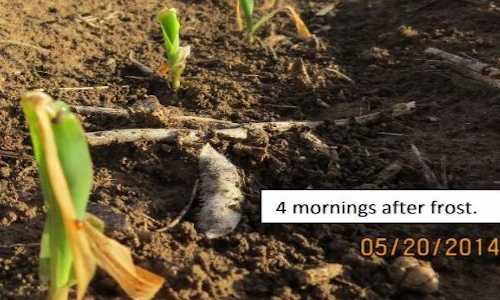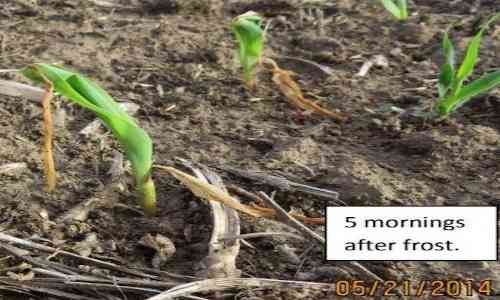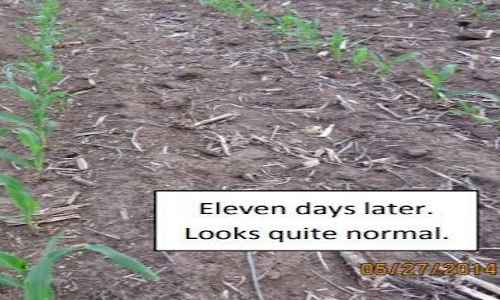


It does take a little time for recovery. Frosted plants I observed this morning, Wednesday (May 13, 2020), were showing about a ¼” of new growth, so it appears that the process will be a little slower this year. Our cold morning was Saturday – about four days ago. However, the average temperature since then has only been 46 degrees.
If, in a couple of days, some are recovering and some are not, then split a few stems and evaluate the color of the growing point to see if it is still a creamy white, or starting to brown. When you can differentiate the living plants versus those that are not recovering, do stand counts, evaluate gaps and then make a decision. The recovering plants might "buggy whip" until that old tissue falls off, but it is tender tissue, and it will. Again, take out the emotion.
Did we stress those plants, even the ones that recovered? Yes, but young seedlings bounce back pretty well. Can diseases enter that wound area and cause additional damage? Yes, that is why we really need to look closely after a few days to insure it is recovering as we expect. In addition, delay adding other stresses until we show good recovery. For example, I encourage at least one new, healthy leaf before herbicide applications to reduce that stress.
I do not have soybean pictures, but the advice remains the same. Wait a few days to evaluate how many plants are actively growing. If we killed the unifoliates that were open, are we getting growth from alternate buds? Is the growth continuing normally? Then evaluate the existing stand and gaps compared to the cost and benefits of replanting. Take out the emotion and make a true business decision.
Source : iastate.edu